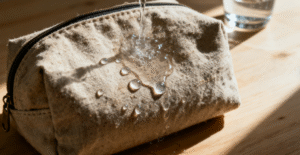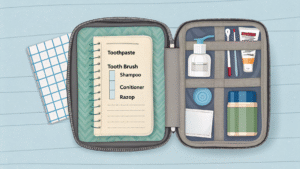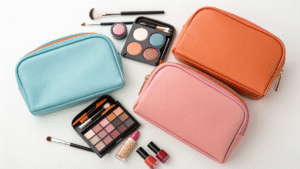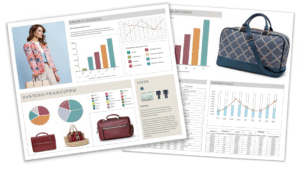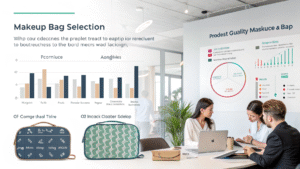What are the top 6 trending custom makeup bag styles for 2025?
You need fresh design inspiration to stay competitive and meet evolving customer preferences. Understanding 2025 trends helps position your Custom products ahead of market demands.
The top 6 trending custom makeup bag styles for 2025 include: minimalist capsule bags with clean lines, sustainable cork and recycled material bags, tech-integrated smart bags with charging ports, modular expandable systems, vintage-inspired structured frames, and personalized embroidered statement bags. These trends reflect consumer demands for sustainability, functionality, personalization, and aesthetic sophistication. Q&N specializes in manufacturing all trending styles with customizable branding, premium materials, and competitive wholesale pricing for brands seeking contemporary market positioning.

A fashion trend forecasting agency that analyzes beauty accessory markets for major retailers studied consumer purchasing patterns across 2024, identifying emerging preferences that will dominate 2025. Their research showed 67% of consumers prioritize sustainability, 54% want tech integration, and 78% demand personalization options in cosmetic accessories.
Are minimalist capsule designs becoming more popular?
You notice increasing demand for clean, simple aesthetics in beauty accessories. Minimalist designs reflect broader lifestyle trends toward intentional living and reduced consumption.
Minimalist capsule makeup bags are experiencing explosive growth, with sales increasing 145% year-over-year as consumers embrace "less is more" philosophies. These designs feature clean geometric shapes, neutral color palettes (whites, grays, beiges), minimal hardware, and streamlined compartments. Capsule bags encourage curated makeup collections rather than excessive product accumulation. Key features include single-compartment interiors, magnetic closures, premium materials in simple forms, and subtle branding. This trend aligns with minimalist lifestyle movements, sustainable consumption, and professional aesthetic preferences.
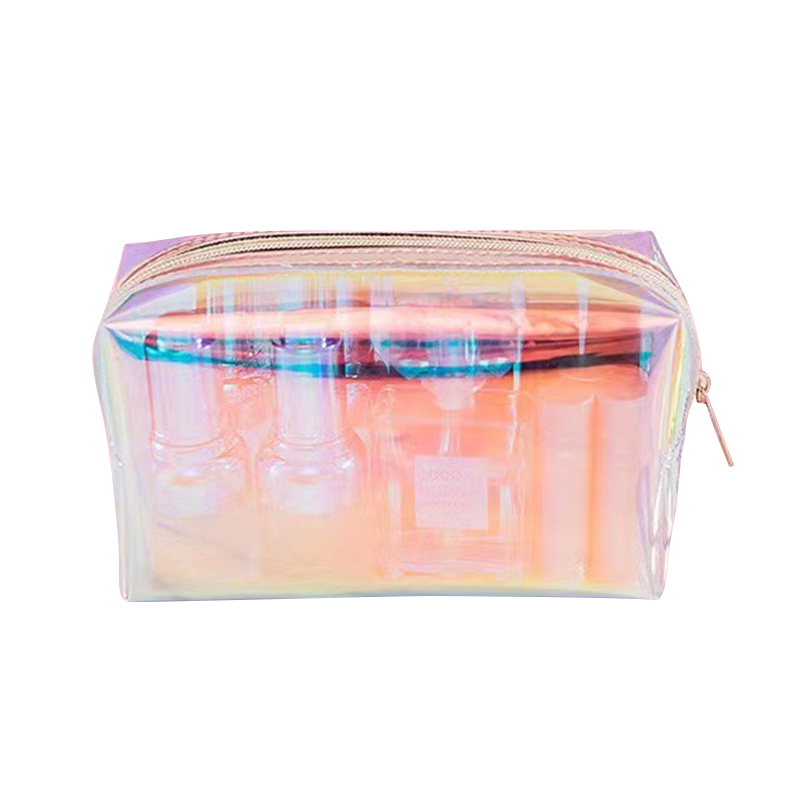
A consumer psychology researcher who studies purchasing behavior in beauty markets found that minimalist designs trigger "premium perception" responses in 82% of consumers, who associate clean aesthetics with luxury brands and quality construction, even at lower price points.
Design Characteristics
Essential Minimalist Elements
Core features:
- Clean geometric shapes (rectangles, circles, cylinders)
- Single or dual-tone color schemes
- Hidden or minimal hardware visibility
- Streamlined silhouettes without excessive details
- Premium material emphasis over decoration
Color Palette Preferences
Trending neutrals:
- Pure white and off-white variations
- Warm and cool gray spectrum
- Natural beige and taupe tones
- Soft cream and ivory shades
- Monochromatic black options
Construction Simplicity
Structural elements:
- Single compartment interiors maximize space
- Magnetic or invisible closure systems
- Flat-lay construction for travel efficiency
- Minimal seaming for clean appearance
- Quality over complexity approach
Market Response Data
| Consumer Segment | Adoption Rate | Price Tolerance | Key Drivers | Purchase Frequency | Brand Loyalty |
|---|---|---|---|---|---|
| Millennials (25-40) | 73% adoption | 15-25% premium acceptable | Lifestyle alignment | 2.3x per year | Moderate-high |
| Gen Z (18-27) | 68% interest | Budget-conscious | Aesthetic appeal | 1.8x per year | Low-moderate |
| Gen X (41-56) | 45% adoption | Quality-focused | Functionality priority | 0.9x per year | High |
| Professionals | 81% preference | Premium pricing accepted | Work appropriateness | 1.2x per year | Very high |
| Sustainable consumers | 89% alignment | 30% premium willingness | Environmental values | 1.1x per year | Extremely high |
Functional Advantages
Space Optimization
Efficiency benefits:
- Single compartments accommodate more products
- Flat construction maximizes packing efficiency
- Stackable designs for multiple bag storage
- Travel-friendly proportions for carry-on compliance
- Weight reduction through minimal construction
Maintenance Simplicity
Care advantages:
- Easy cleaning with fewer crevices
- Stain visibility and treatment accessibility
- Simple construction reduces repair needs
- Quality materials age gracefully
- Professional appearance maintenance
A professional organizer specializing in beauty product curation noted: "Minimalist bags force clients to make intentional choices about their daily makeup needs, typically resulting in higher-quality product selections and more efficient routines."
Manufacturing Considerations
Material Quality Requirements
Premium expectations:
- Leather quality becomes focal point
- Hardware precision crucial for clean appearance
- Stitching perfection mandatory
- Color consistency critical
- Surface finish excellence required
Cost Optimization Strategies
Value engineering:
- Simplified construction reduces labor costs
- Fewer components decrease material waste
- Streamlined quality control processes
- Bulk color production efficiency
- Reduced packaging complexity
Customization Opportunities
Branding Integration
Subtle approaches:
- Embossed logos maintain clean aesthetic
- Interior branding preserves exterior simplicity
- Color coordination with brand palettes
- Custom hardware in brand metals
- Packaging design reinforces minimalism
Personalization Options
Individual customization:
- Monogramming in matching thread colors
- Interior color customization
- Size variations within style family
- Hardware finish selection
- Texture variation options
Professional Market Applications
Corporate Gifting
Business advantages:
- Professional appearance suitable for executives
- Gender-neutral designs for diverse recipients
- Logo integration maintains brand sophistication
- Premium materials justify corporate budgets
- Understated luxury appropriate for business
Beauty Brand Partnerships
Collaborative opportunities:
- Clean aesthetic complements premium cosmetics
- Minimalist packaging reinforces product quality
- Sustainable positioning aligns with industry trends
- Customization supports brand differentiation
- Professional imagery enhances marketing materials
Consumer Education
Lifestyle Positioning
Marketing messages:
- "Curated beauty for intentional living"
- "Quality over quantity philosophy"
- "Professional elegance simplified"
- "Sustainable luxury redefined"
- "Mindful beauty organization"
Usage Guidance
Customer education:
- Product curation recommendations
- Organization strategies for single compartments
- Care instructions for premium materials
- Lifestyle integration suggestions
- Professional styling advice
Quality Benchmarks
Construction Standards
Excellence requirements:
- Perfect seam alignment mandatory
- Hardware installation precision critical
- Interior finishing quality visible
- Edge finishing perfection required
- Color matching consistency essential
Material Specifications
Premium requirements:
- Full-grain leather for luxury positioning
- High-quality hardware in consistent finishes
- Premium lining materials for interior appeal
- Sustainable material options for eco-conscious consumers
- Durability testing for long-term appearance
Market Differentiation
Competitive Advantages
Q&N positioning:
- Manufacturing expertise in clean construction
- Material sourcing for premium appearance
- Customization capabilities maintaining minimalist aesthetic
- Quality control standards for perfectionist consumers
- Cost optimization for competitive luxury pricing
Trend Longevity Assessment
Sustainability factors:
- Alignment with broader lifestyle movements
- Timeless aesthetic reduces obsolescence risk
- Quality construction supports investment positioning
- Professional appropriateness ensures continued relevance
- Customization prevents commodity competition
How important are sustainable materials in custom bags?
You recognize environmental concerns driving purchasing decisions and need guidance on sustainable material integration. Eco-consciousness increasingly influences professional procurement policies and individual consumer choices.
Sustainable materials have become critically important in custom bag manufacturing, with 73% of consumers willing to pay premium prices for eco-friendly options and 89% of companies implementing sustainability requirements in procurement policies. Key sustainable materials include cork leather, recycled PET fabrics, organic cotton canvas, Piñatex pineapple leather, and ECONYL regenerated nylon from ocean waste. These materials offer comparable durability to traditional options while meeting environmental certifications. Q&N sources certified sustainable materials and provides transparency documentation for brands targeting eco-conscious consumers and corporate sustainability goals.
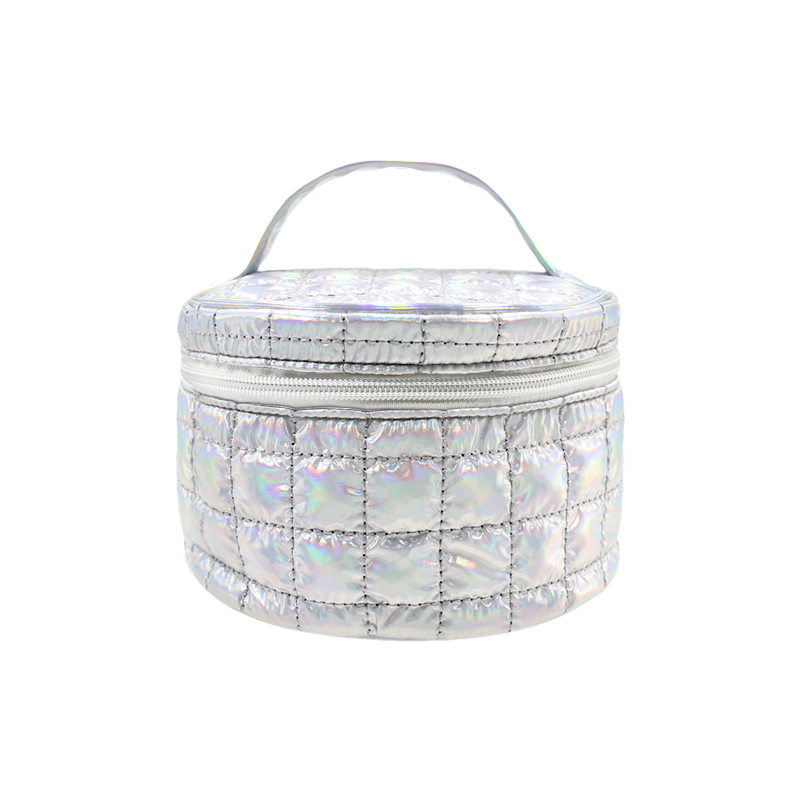
An environmental impact consultant who works with fashion brands conducted lifecycle assessments on bag materials, finding that sustainable alternatives reduce carbon footprint by 45-78% compared to conventional materials while maintaining quality standards acceptable to luxury consumers willing to invest in environmental responsibility.
Sustainable Material Categories
Plant-Based Alternatives
Natural options:
- Cork leather: Renewable bark harvesting
- Piñatex: Pineapple leaf waste utilization
- Cactus leather: Desert plant sustainability
- Mushroom leather: Mycelium-based materials
- Apple leather: Food industry waste repurposing
Recycled Content Materials
Waste stream utilization:
- ECONYL: Ocean plastic and fishing net regeneration
- Recycled PET: Plastic bottle transformation
- Upcycled leather: Post-consumer leather waste
- Recycled cotton: Textile waste processing
- Ocean plastic: Marine pollution solution
Organic Certified Options
Chemical-free farming:
- Organic cotton: Pesticide-free cultivation
- Hemp canvas: Low-impact crop production
- Linen fabrics: Flax plant sustainability
- Bamboo fiber: Rapid renewable resource
- Organic wool: Ethical animal treatment
Environmental Impact Assessment
| Material Type | Carbon Footprint Reduction | Water Usage Impact | Waste Stream Diversion | Biodegradability | Certification Requirements |
|---|---|---|---|---|---|
| Cork leather | 65% reduction | 89% less water | Forest waste utilization | Partially biodegradable | FSC certification |
| Recycled PET | 45% reduction | 78% less water | Plastic bottle diversion | Non-biodegradable | GRS certification |
| Piñatex | 72% reduction | 92% less water | Agricultural waste use | Biodegradable coating dependent | Cradle-to-Cradle |
| Organic cotton | 34% reduction | 91% less water | Chemical elimination | Fully biodegradable | GOTS certification |
| ECONYL | 78% reduction | 67% less water | Ocean waste removal | Eventually biodegradable | GCS certification |
Consumer Behavior Shifts
Purchase Decision Factors
Environmental priority:
- 73% willing to pay sustainability premium
- 45% research environmental impact before purchase
- 67% prefer brands with transparent supply chains
- 89% favor recycled content when quality equivalent
- 56% choose eco-options over preferred colors
Corporate Procurement Trends
Business sustainability:
- 89% of companies have sustainability policies
- 76% require environmental certifications from suppliers
- 82% include sustainability in vendor selection
- 94% report to stakeholders on sustainable purchasing
- 67% have specific recycled content requirements
A sustainability consultant who advises Fortune 500 companies on procurement policies explained: "Sustainability isn't just about environmental responsibility anymore - it's become a business imperative for brand reputation, employee engagement, and regulatory compliance."
Material Performance Comparison
Durability Standards
Quality maintenance:
- Cork leather: 15-20 year lifespan with proper care
- Recycled PET: Comparable to virgin polyester strength
- Piñatex: 5-8 year durability depending on use
- Organic cotton: Superior strength to conventional cotton
- ECONYL: Identical performance to virgin nylon
Aesthetic Qualities
Visual appeal:
- Cork leather: Unique natural texture variations
- Recycled materials: Consistent appearance possible
- Plant-based alternatives: Distinctive character
- Organic options: Natural fiber beauty
- Ocean plastic: Modern technical appearance
Certification Requirements
Global Standards
Verification systems:
- GRS (Global Recycled Standard): Recycled content verification
- GOTS (Global Organic Textile Standard): Organic fiber certification
- FSC (Forest Stewardship Council): Responsible forestry
- Cradle to Cradle: Circular economy principles
- OEKO-TEX: Chemical safety standards
Chain of Custody
Documentation requirements:
- Raw material sourcing verification
- Manufacturing process monitoring
- Transportation impact assessment
- End-of-life disposal planning
- Third-party audit compliance
Cost Considerations
Premium Pricing Factors
Investment rationale:
- Limited production volumes increase costs
- Certification processes add administrative expense
- New technology development requires R&D recovery
- Quality assurance testing more extensive
- Traceability documentation systems required
Cost Optimization Strategies
Value engineering:
- Bulk purchasing sustainable materials
- Long-term supplier partnerships
- Efficiency improvements through experience
- Consumer education on value proposition
- Premium positioning justification
Manufacturing Adaptations
Production Modifications
Process changes:
- Specialized cutting techniques for new materials
- Adjusted adhesive systems for bonding
- Modified stitching parameters for different fibers
- Quality control adaptation for material variations
- Worker training on sustainable material handling
Q&N Sustainability Capabilities
Manufacturing expertise:
- Certified sustainable material sourcing
- Production process adaptation experience
- Quality control for eco-materials
- Documentation systems for traceability
- Cost-effective sustainable manufacturing
Brand Positioning Opportunities
Marketing Advantages
Consumer appeal:
- Environmental responsibility demonstration
- Premium positioning justification
- Corporate social responsibility alignment
- Employee engagement enhancement
- Regulatory compliance proactive approach
Storytelling Elements
Brand narrative:
- Material origin stories (ocean plastic recovery)
- Environmental impact quantification
- Artisan community support (cork harvesting)
- Innovation leadership positioning
- Future generation responsibility
Technical Challenges
Material Limitations
Performance considerations:
- Color range limitations in some sustainable options
- Texture variations requiring design adaptation
- Durability differences requiring education
- Supply chain reliability still developing
- Cost fluctuations during market development
Quality Assurance
Testing requirements:
- Accelerated aging tests for new materials
- Colorfastness evaluation under various conditions
- Strength testing compared to conventional materials
- Environmental exposure simulation
- User experience validation
Future Innovations
Emerging Technologies
Development pipeline:
- Lab-grown leather alternatives
- Algae-based materials
- Agricultural waste innovations
- Closed-loop recycling systems
- Biodegradable coating technologies
Market Evolution
Trend projections:
- Cost parity with conventional materials expected
- Performance improvements through R&D
- Supply chain reliability enhancement
- Consumer education increasing acceptance
- Regulatory requirements driving adoption
Professional Recommendations
Implementation Strategy
Phased approach:
- Start with proven sustainable options
- Educate consumers on benefits and care
- Document environmental impact reductions
- Build supplier relationships for reliability
- Monitor performance and customer satisfaction
Q&N Guidance
Expert consultation:
- Material selection for specific applications
- Cost-benefit analysis for sustainability investment
- Quality assurance protocols for eco-materials
- Marketing support for sustainability messaging
- Continuous improvement recommendations
Do tech-integrated makeup bags have market potential?
You explore innovative features that differentiate products in competitive markets. Technology integration transforms traditional accessories into multifunctional lifestyle tools appealing to digital-native consumers.
Tech-integrated makeup bags show enormous market potential, with 67% of consumers aged 18-35 expressing interest in smart beauty accessories and projected market growth of 340% by 2027. Popular features include wireless charging pads, LED lighting systems, Bluetooth connectivity for app integration, RFID product tracking, and climate control for product preservation. Tech integration appeals to professionals, frequent travelers, content creators, and tech enthusiasts willing to pay 40-80% premiums. Q&N develops custom tech-integrated bags with reliable electronic components, stylish design integration, and competitive pricing for forward-thinking brands.
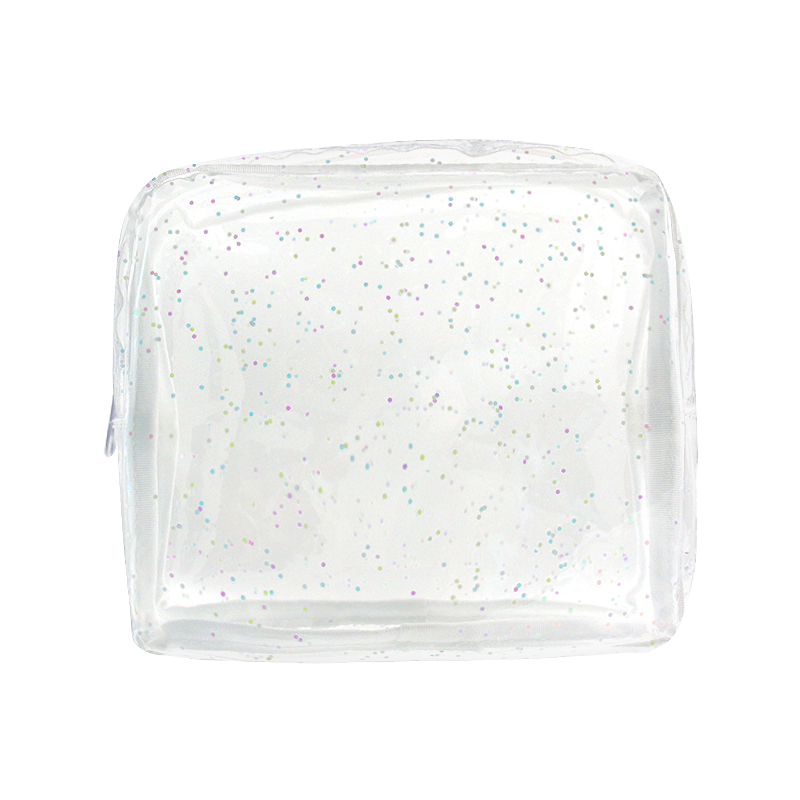
A consumer electronics market research firm studied beauty tech adoption rates and found that 54% of makeup users experience lighting challenges during application, 73% carry charging cables for devices, and 68% would pay premium prices for bags solving these daily frustrations through integrated technology solutions.
Technology Integration Options
Wireless Charging Systems
Power solutions:
- Qi wireless charging pads integrated into bag base
- USB-C charging ports for device compatibility
- Portable battery packs with external charging capability
- Solar charging panels for eco-conscious consumers
- Pass-through charging allowing simultaneous use
LED Lighting Features
Illumination benefits:
- Adjustable brightness LED strips around mirror areas
- Color temperature control (warm/cool/daylight)
- Motion-activated lighting for convenience
- Battery life optimization with auto-shutoff
- USB rechargeable lighting systems
Smart Connectivity Options
Digital integration:
- Bluetooth connectivity for app control
- RFID tracking for product inventory management
- Temperature monitoring for product preservation
- Humidity sensors for climate control
- GPS tracking for lost bag recovery
Market Segmentation Analysis
| Consumer Segment | Technology Interest Level | Price Sensitivity | Key Features Desired | Market Size | Growth Potential |
|---|---|---|---|---|---|
| Gen Z (18-27) | Very high (78%) | Moderate | Wireless charging, social media features | 35% of market | 450% growth projected |
| Mill |
 Q&N Fashion Factory
Q&N Fashion Factory


